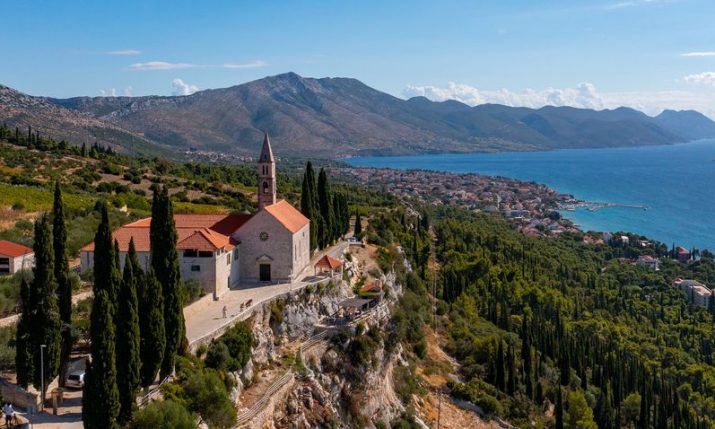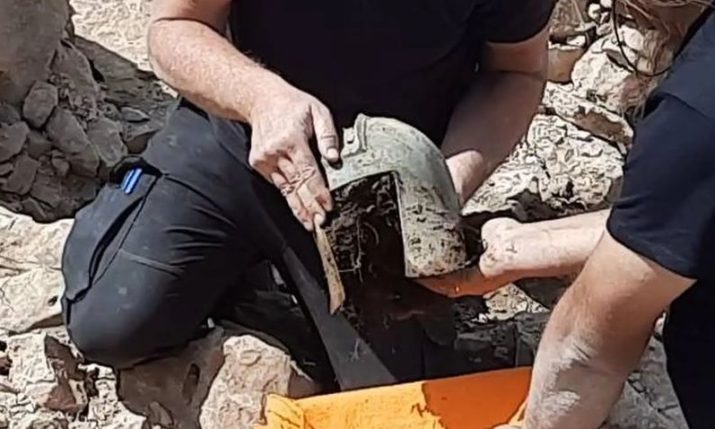The fascinating story of the Pelješac Maritime Association
- by croatiaweek
- in Entertainment
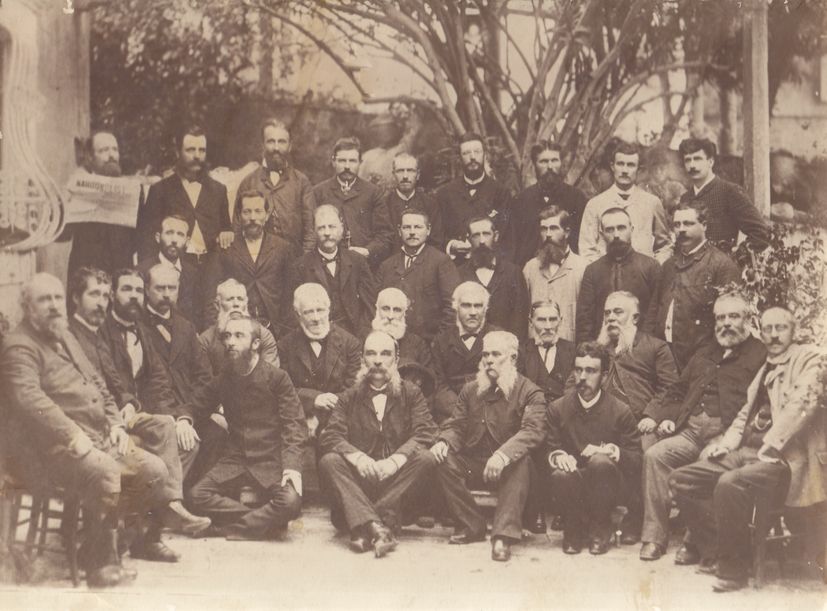
Orebić’s elite in the 1870s (Photo credit: Forgotten Dalmatia)
By Igor Goleš
The Pelješac Maritime Association (Associazione Marittima di Sabioncello), sailing shipping joint stock company, seated in Orebić, was active between year 1865 and 1891. Its initiator and the first president was Dr. Ivan Ivanišević, who was a part of the founding initiative board, together with Anton Bijelić and Božo Murina.
The goal of the Association was purchasing boats and transferring the merchandise on the long voyage ships. As a joint stock company it was active thanks to the capital of, first of all, Pelješac investors, but also to the substantial share of the capital from other parts of Croatia (middle Dalmatia, Dubrovnik area, Boka kotorska) and also from the distant maritime places and centers (Constantinople, Trieste, Cardiff, Livorno, Marseille and Mariupol).
Soon after the establishment, the Association owned two sailing ships: Bark Adam and Clipper Bark Eve. The fleet grew during the war, so in 1869 the Association owned 19 ships. Everyone aspired as higher capacity of the ships and international classification. During 26 years of their existence 33 long voyage sailing ships were built or bought.
The ships were transferring wheat and coal (from Odessa to England and back), sugar (Batavia – New York), salt (from Sicily and England to USA), cotton (to New York), wood (from the ports of Mexican bay). They sailed to North (New York, Boston, Baltimore, Philadelphia) and South (Brazil) America, India, Indonesia (Java, Sumatra) and Russia.
After the year 1870 the Association reached its peak – they owned some thirty sailing ships with the capacity of over 21.000 tons on which there were over 70 captains and officers aboard. During that period the Pelješac Maritime Association was the pride of the Austrian Hungarian navy.
A good position and enthusiasm of the stock holders lead to laying foundations for the shipyard in Orebić. In 1875 the equipment was acquired and during the visitation of the Austrian emperor Franz Joseph the new shipyard – Cantiere Arciduca Rodolfo – was solemnly open. Old ships were to be renewed there and new ships built in order to renew the shipbuilding tradition on Pelješac.
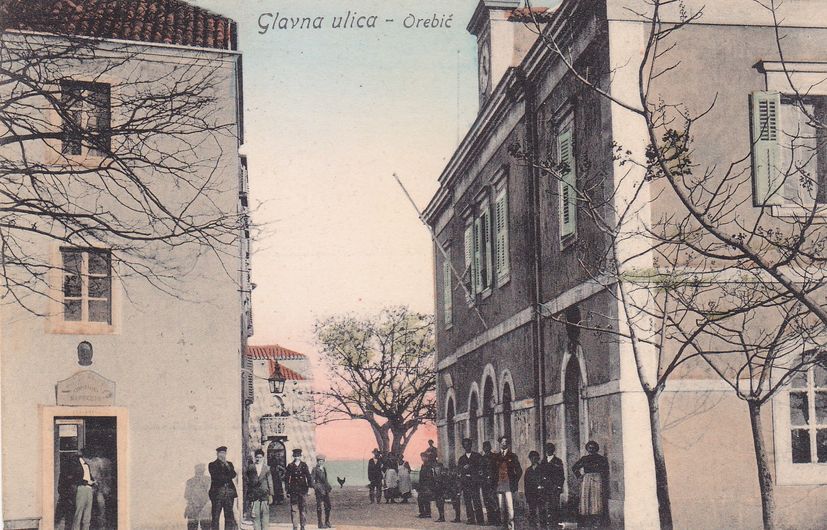
Postcard of Orebić from 1909 (Photo credit: Forgotten Dalmatia)
When the emperor Franz Joseph visited Orebić, the whole town was decorated. On his route towards the municipal building the road was covered with Persian rugs which captains used to bring from their long journeys. What a presentation of the host’s wealth! The emperor was thrilled with the reception where he was introduced to the councils of the Orebić municipality, 22 of them, every one of them being long distance ship captains. There was a recorded anecdote with the captain Šimun Štuk who thrilled the emperor.
The emperor asked him how many children he had, and Štuk replied that he had seven sons and that they are all long distance ship captains. The emperor was surprised by this reply and he asked why all of his sons were seamen, and the old sea dog replied that even if he had 77 sons, they would all be captains, because that was his and his family’s life.
Unfortunately, only 13 years after its foundation and after three long distance sailing ships (Rubens, Zabulon and Jafet II), the shipyard stopped working. The last one to be built was Zabulon, and the excerpts from the inventory book, dating back from 1878, you can see here came from Zabulon and are signed by the captain Banac.
The Association faced first greater difficulties with the outbreak of the Russo – Turkish War (1877 – 1878), when the wheat transfer from Russia (via Ukraine) was stopped as well as the trade on the Black sea altogether. It was then that the Pelješac maritime families, family Mimbelli and the families of Mate and Fran Kovačević (seated in Marseille and Mariupol), who were among the greatest stock holders in the Pelješac Maritime Association.
The troubles continued with sinking of the ships Jafet (1877), Seth and Rubens (1878), Eve (1879), Serug (1880), Malaleel (1881), Arfaxad and Cainan (1882) and Sem (1884).
In 1881 the new management of the Association was chosen, the former president Dr. Ivanišević had died and captain Jozo Šunj was elected the new president.
Jozo Šunj was a very important person in Orebić at that time, with his knight title, and he became famous when in 1861, sailing on his ship, he saved the crew of the American ship which was stranded on the Newfoundland coast. For this feat he was awarded by Abraham Lincoln, who gave him a golden watch with an inscription.
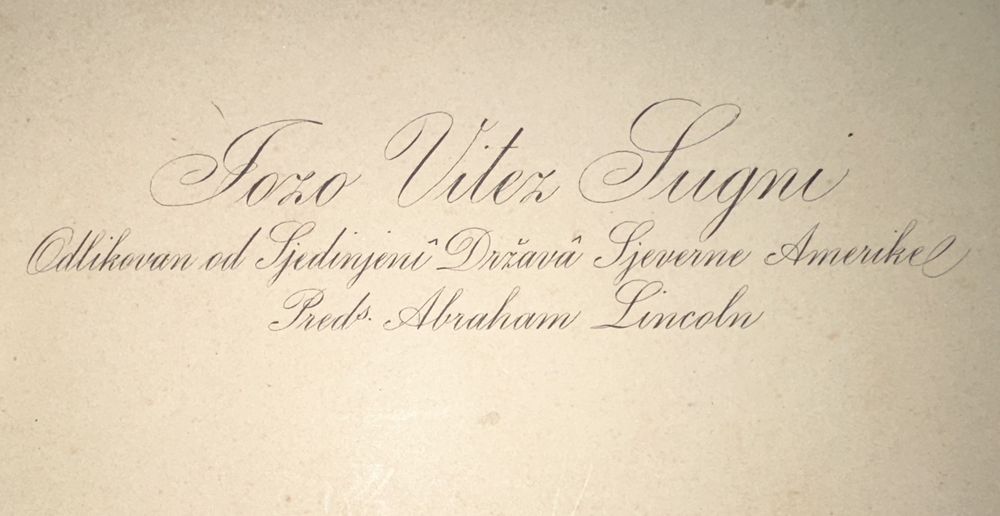
Captain Jozo Sunj’s visit card from 1880 (Photo credit: Forgotten Dalmatia)
The first assignment of the new president and the management was to establish the true condition of the Association. The result of their research was not promising, so in the meeting held a year later, on 28th March 1882, it was decided that after the dividends were paid off, the Association would be liquidated. Step by step, the Pelješac Maritime Association ceased to exist.
By the end of 1889 all the assets were sold, including the remaining sailing boats – 10 out of 24 were sold to the Pelješac families. In the meeting held on 30th September 1891 the last balance sheet of the Pelješac Maritime Association was approved and it ceased to exist.
The story of the Pelješac Maritime Association is surely one of the most special in the maritime tradition of Dalmatia. What is incredible is that from such a small town so many seamen sailed the world and how that small town carries in its heart such a rich history.
A part of the wealth coming from the captain families in Orebić can today be seen in the Franciscan monastery in Orebić, as well as in the Maritime Museum in Orebić. Most of the items ended up there as donations from the descendants. I was especially thrilled by the Franciscan monastery set, while I failed to enter and look around the Museum, even though I have announced my visit couple of times in the last two years, whenever I went to Orebić. It is a pity that this museum is not better organized.
With that kind of Museum’s fundus, they should work on their promotion more, instead of refusing visitors. That is the least they could do in honor of those which founded it, the late Matko Župa and Cvito Fisković, but also all of those who died across the world seas in different accidents of their ships.
It is because of them all that we can be proud of this small Dalmatian town, with a big maritime heart.

